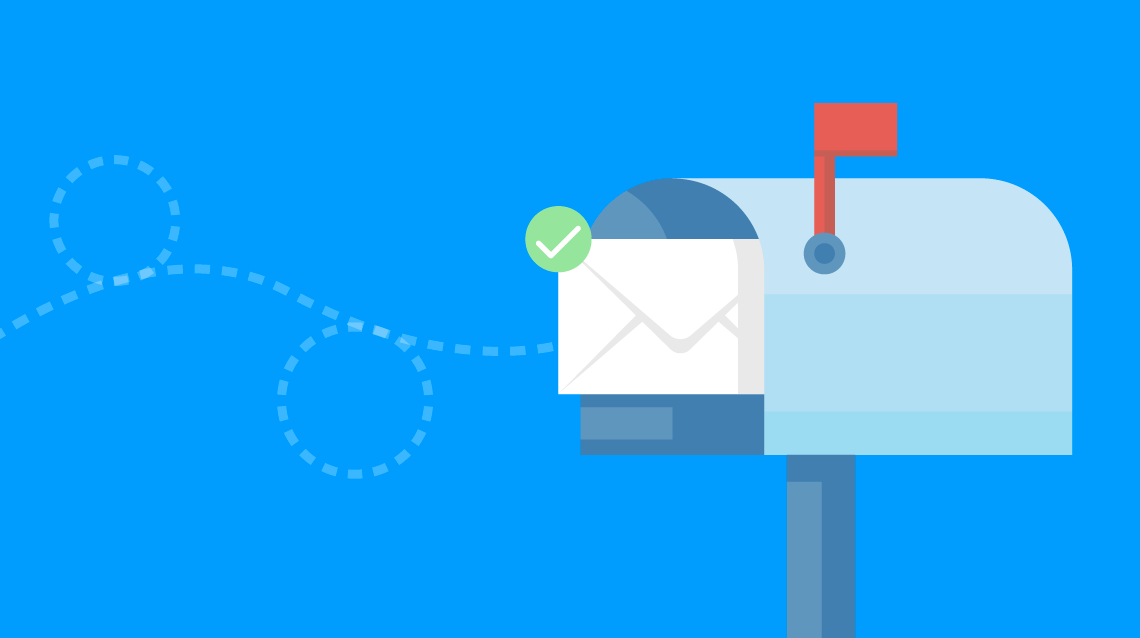
What is Email Deliverability?
April 8, 2020Email deliverability is one of the most important metrics to keep track of in your email marketing strategy.
Open rates and click-through rates are important factors, but if your emails aren’t able to get into your subscriber’s inbox, then you won’t be able to get opens or clicks.
Let’s take a look at what email deliverability is, what you should be aiming for, and what you can do to improve your deliverability.
What is Email Deliverability?Email deliverability is how well an email sender is able to deliver emails to recipients’ inboxes.
The email sender is you and the Internet service provider (ISP) is the third-party standing in the way of you getting your emails to your subscribers. ISPs are Gmail, Yahoo!, Outlook, etc., and they want your subscribers to engage with your emails, not mark them as spam.
That’s where deliverability comes in. ISPs block spammers from reaching your inbox and if they see that YOUR emails have been marked as spam, your deliverability rate is going to decrease.
This sounds scarier than it is. As long as you’re treating your list right, you’re going to be able to maintain a high deliverability rate and positively crush your email marketing strategy. We’ll talk about the details of that in the third section, but first let’s figure out what your email deliverability is.
How to Calculate Email DeliverabilityTo figure out your email deliverability rate, take the number of emails that reach recipients’ inboxes and divide it by the total number of emails sent. Then, multiply by 100 to get the percentage.
For example, let’s say you have 10,000 subscribers on your email list and you send a broadcast email to all 10,000 of those subscribers. The next day you check to see how many people received the email. You find that 8,000 subscribers out of 10,000 received it.
Take 8,000 and divide it by 10,000. You’ll get 0.8. Multiply that by 100 to get your percentage and you have an 80% deliverability rate.
You want your email deliverability rate to be as close to 100% as possible. If it’s not, then you’re practicing some bad habits that are making your subscribers complain about your emails.
Let’s go over some of those habits.
 How to Improve Your Email Deliverability
How to Improve Your Email Deliverability
Here are a few ways to improve your email deliverability or to keep your email deliverability at 100%.
#1: Authenticate Your Email Domain & Use the Same IP AddressAuthenticating your email domain is like meeting up with your ISP for coffee and proving that you’re a real person. ISPs like authenticated email domains because it gives them the confidence that you’re not a spammer trying to convince people to give you their bank information so you can transfer them the millions of dollars you just inherited from a distant relative. You can do this through third-parties and can learn more about authentication here.
Imagine that the ISP you met for coffee wanted you to send them a secret 4-digit code every time you sent an email so they knew that you hadn’t been hacked. Sending your emails from the same IP address is like giving your ISP that 4-digit code. If you start sending emails from another IP address, your ISP will see that you didn’t give them the secret 4-digit code and will think you’ve been hacked, lowering your deliverability rate.
#2: Send Subscribers Content They Care AboutIf you’re a nut butter company, you shouldn’t be sending your subscribers emails about the best sofa deals right now. You want to send them information on how to use your nut butter to make delicious recipes for their family. This is an important part of the opt-in process. You want to make sure that subscribers know exactly what kinds of emails you intend to send them when they sign up to be added to your list.
Subscribers will be happy to receive emails from you as long as they can read your subject line and see that it’s content they wanted to see from you.
#3: Spread Out Your PromotionsAt DigitalMarketer, we create promotional calendars to make sure that we’re not sending too many promotions at one time. Nobody (including us) wants to be overwhelmed with product promotion after promotion. It makes your subscriber feel like they’ll never be able to buy it all and waters down your offers (since they know there’s always another one around the corner).
To avoid overwhelming your subscribers with too many promotional product emails, create a 90-day calendar and figure out when you’re going to launch product campaigns with accompanying promotional emails. Then, make sure that your promotions are spread out so that you’re offering valuable content in-between promotions that keeps subscribers interested in your emails.
#4: Don’t Email Too OftenWe talked about sending too many promotional emails, but there’s also such a thing as sending too many emails in general. This can decrease a lot of your email metrics. The amount of emails that qualify you as sending emails “too often” is specific to your list and what subscribers opted-in to.
For example, if you’re a daily newsletter, sending emails every day makes sense. Subscribers asked for you to send them an email every day by opting in. But, if you’re a nut butter company, they probably don’t want to see you in their inbox every single day. Choosing a day and branding it with your company, like Nut Butter Recipe Monday, is a better way to send them consistent content without overdoing it.
#5: Use List Hygiene to Clean Your ListList hygiene got its name because it’s like giving your email list a bath. It gets rid of all of the unnecessary email addresses that are bouncing on a consistent basis or totally unengaged subscribers. This is an important part of maintaining an email list. Although it’ll lower your subscriber number, it’s going to increase your open rates because you’re sending to a higher percentage of engaged subscribers post-cleaning.
The general list hygiene rule is to clean your list every 6(ish) months. This gives you the opportunity to segment your unengaged list and put them through a re-engagement campaign.
You want to take your subscribers and move them into the Conversion Stage of the Customer Value Journey—and that can’t be done if they never get your emails. If your subscribers don’t get your emails, they’ll never know about your offers, products, or content.
That’s why email deliverability is a huge part of every email marketing strategy.

The post What is Email Deliverability? appeared first on DigitalMarketer.
Read more: digitalmarketer.com
A quick note about the reviews I do on this site. The product vendors may give me access to their products for free in order for me to do my review, alternatively, I may have bought the product myself. However I make no promises to vendors regarding what I write in my review. Should you click a link that takes you to a sales page for a paid product for sale this link will be an affiliate link and I will be paid a percentage of the sales price should you decide to invest in it.




